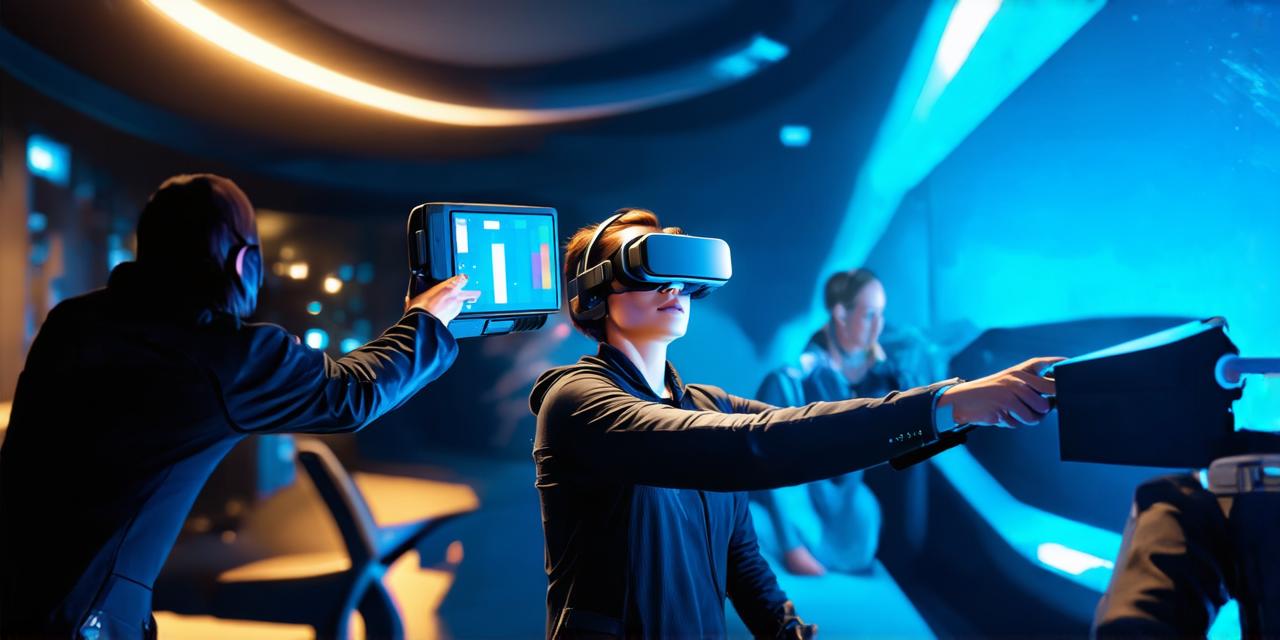Types of Data Collected by VR Systems
Virtual reality systems collect a wide range of data from their users, including:
- Head Movement: VR headsets track the movement of your head in real-time, allowing you to look around in virtual environments. This data is used to adjust the position and orientation of objects in the virtual world, as well as to determine where you are looking.
- Hand Tracking: VR systems use sensors on your hands to track their movements and gestures. This allows you to interact with objects in virtual environments, such as pointing, grabbing, and wielding weapons.
- Body Movement: Some VR systems use cameras and sensors to track the movement of your entire body. This can be useful for activities like dancing or sports training, where you need to move your entire body in a specific way.
- Facial Expressions: Some VR systems use cameras to track your facial expressions, allowing you to communicate with characters in virtual environments through nonverbal cues.
- Audio Input: VR systems also collect audio data from microphones, allowing users to communicate with other players or characters in the virtual world.
- Location Data: Some VR systems use GPS data to track your location in real-world environments, allowing you to interact with virtual objects and environments that are geographically specific.
- Eye Tracking: Eye-tracking technology is becoming increasingly common in VR systems. This technology allows the system to determine where you are looking, which can be useful for improving user interface design or for creating more immersive experiences.
Using Data to Improve User Experience
VR systems use the data they collect to improve the overall user experience. For example:
- Personalization: VR systems can use data on your preferences and behavior to personalize the virtual environment to your needs. For example, if you tend to move around a lot while playing games, the system may adjust the difficulty level or create more open spaces for you to move around in.
- Improved Accuracy: VR systems can use data on your movements and gestures to improve the accuracy of interactions with objects in virtual environments. This can make activities like aiming weapons or driving cars feel more realistic and responsive.
- Safety Measures: Some VR systems use data on your body movement to detect if you are about to fall or bump into an object in real-world environments. This can help prevent injuries and ensure a safe experience.
- Better Content Creation: VR systems can use data on user behavior to inform content creation, such as what types of environments or activities are most popular with users. This can lead to the creation of more engaging and immersive experiences.
- Improved Accessibility: VR systems can use data on your facial expressions or eye tracking to improve accessibility for users with disabilities. For example, a system that uses eye-tracking technology could allow someone with limited mobility to control their character in a virtual environment using only their eyes.
Real-Life Examples of Data Collection in VR
There are many examples of how data collection is being used in virtual reality systems to improve the user experience. Here are a few:
- Oculus Quest 2: The Oculus Quest 2 uses sensors on your head, hands, and body to track your movement and create a range of interactive experiences that are tailored to your needs and preferences. For example, you can use hand gestures to control objects in virtual environments or use eye tracking to navigate through menus.
- Beat Saber: Beat Saber uses audio input from the player’s microphone to allow them to communicate with other players in the virtual world. It also uses hand tracking and facial expressions to improve the accuracy of interactions with objects, such as hitting blocks with your hands or triggering special effects with your eyes.
- The Lab VR Experience: The Lab VR experience on the Oculus Quest 2 includes a range of interactive experiences that use data from sensors on your head, hands, and body to create a personalized experience for each user. For example, you can use hand gestures to control objects in virtual environments or use eye tracking to navigate through menus.
- Virtual Reality Training: VR systems are increasingly being used for training purposes, such as simulating real-world scenarios for military or medical personnel. In these cases, data on the user’s movements and interactions with virtual objects can be used to assess their performance and identify areas for improvement.
Summary
Virtual reality systems collect a wide range of data about their users, including head movement, hand tracking, body movement, facial expressions, audio input, location data, and eye tracking. This data is used to improve the overall user experience by personalizing the virtual environment, improving accuracy, ensuring safety, informing content creation, and improving accessibility. By using data collection effectively, VR systems can create more engaging, immersive, and accessible experiences for users of all ages and abilities.
